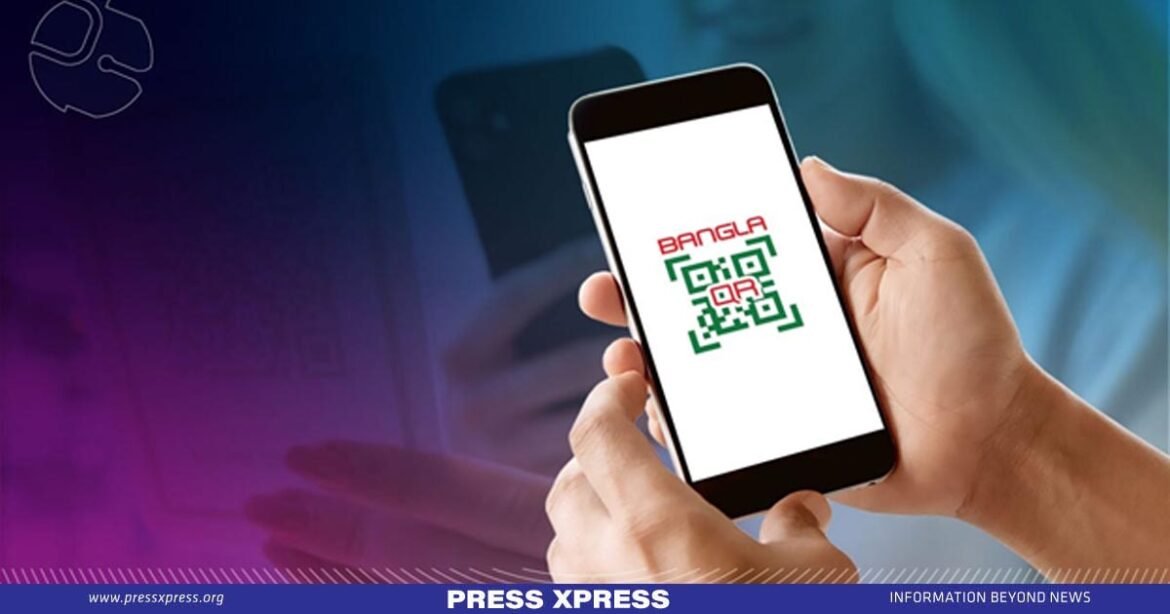The central bank launches a “scan to pay” solution aimed at integrating micro-merchants into the digital payment ecosystem.
In an era where technology is rapidly reshaping our daily lives, one of the most profound transformations can be seen in the way we handle money. A large portion of our population relies on cash transactions, while many other countries have passed laws that allow businesses to ban cash payments, and in some cases, even require payments by mobile applications or credit cards. People around the world are inputting their cash into mobile phones or plastic cards and moving towards a cashless society. Cash is no longer king; rather, it is on the decline.
Cashless revolution amid economic downturn
During economic downturns, governments often lower interest rates to encourage spending and investment, as people tend to hoard cash. Cashless economies, where financial transactions are conducted electronically rather than with physical money, offer advantages. They prevent mass cash withdrawals, giving governments and banks more control over the economy, stimulating lending and investment. Cashless systems promote transparency, accountability, security, convenience, and efficiency.
Bangladesh has seen a rise in mobile banking, with services like bKash and Rocket allowing mobile payments and financial transactions. E-commerce has played a pivotal role in the country’s economic growth, with projections of a $20 billion market by 2020. The use of electronic payment methods like credit and debit cards has also increased, with a 24% rise in credit card usage recently.
QR codes: A low-cost initiative
The “Cashless Bangladesh, Smart Bangladesh” campaign, initiated by the Bangladesh Bank, aims to reduce the country’s dependence on physical cash. This initiative has gained support from various banks, mobile financial service (MFS) providers, and card companies. To use this service, individuals need to have the relevant app from their bank, card issuer, or mobile service provider. Major card companies like MasterCard, Visa, and Amex, as well as MFS providers like bKash, mCash, and Rocket, have also joined the campaign.
What Bangla QR offers?
The Bangla QR code system offers a cost-effective digital payment solution, allowing customers to make payments to small-scale vendors by scanning printed QR codes, which are readily available, even with street-side merchants. QR codes are two-dimensional patterns of black and white squares that can be scanned by smartphone cameras, point of sale (POS) terminals, or similar devices. This barcode-like system encodes information in a grid of pixels within a square format.
This method makes it easy for customers to pay for purchases from a variety of vendors by simply scanning the QR code with their smartphones. It offers convenience to both merchants and customers and is accessible to a wide range of individuals, including small shop owners, cobblers, tea stall operators, barbers, and independent workers like Pathao and Uber drivers who can accept payments via QR codes.
Standards and guidelines
Bangladesh’s central bank, through its Payment Systems Department, introduced an interoperable “scan to pay” initiative to enhance financial inclusion. They developed a National QR code Standard for Bangla QR, a matrix barcode containing information about attached items. Guidelines for safe, affordable, and efficient retail-level payment systems, particularly for micro-merchants, were published on January 6, 2021.
On January 18, 2023, the program commenced with an interoperable Bangla QR Code for 1,200 small merchants in Motijheel Commercial Area. It aims to promote payments for goods and services using mobile banking apps, mobile financial services (MFS), and payment service providers (PSP) nationwide.
Around 10 banks and MFS providers are currently participating, with all banks expected to join later. Individuals can transact up to Tk20,000 daily through static Bangla QR codes, while merchants can accept funds from various payment instruments without passing on Merchant Discount Rates (MDR) to customers.
Although there are no official data on micro-merchants, there’s a consensus that their numbers exceed one crore, indicating a significant market for this initiative.
Bangla QR initiative aims
The Bangla QR initiative aims to digitize and formalize the bill acceptance process for micro-entrepreneurs, including tea vendors, jhalmuri vendors, vegetable vendors, fish vendors, cobblers, barbers, and hawkers. These individuals, known as micro-merchants, conduct their businesses in various marginal professions.
To join the initiative, micro-merchants need a certificate of their profession from local public representatives or professional organizations if such documents cannot be obtained. While some experts anticipate challenges in convincing these vendors to open Bangla QR accounts due to their unfamiliarity with formal banking and concerns about taxation, the central bank may offer additional banking benefits, such as future loans, to incentivize their participation.
Envisioning new financial age
Individuals holding personal retail accounts will have the option to use Bangla QR, enabling them to conveniently settle bills for purchased goods and services through any mobile banking application, mobile financial service (MFS), or payment service provider (PSP). This means that customers at retail stores can pay their bills by deducting the amount from their respective accounts, including through credit and debit cards.
The introduction of this new digital payment method is expected to gain rapid acceptance, particularly in remote areas, as the Bangladesh Bank has eased the requirements for opening personal retail accounts for micro and underprivileged businesses. Customers will be encouraged to embrace QR code-based payments, which could substantially reduce banking expenses.
QR code payment services will directly benefit millions of small and medium-sized entrepreneurs, suppliers, distributors, and factory owners throughout the country. Bangla QR has the potential to revolutionize the nation’s digital transaction system. Reports suggest that if Bangladesh effectively implements QR transactions, it could boost GDP by 1.7%.
To achieve this potential, it is imperative for the government and the private sector to collaborate in expanding access to electronic payment methods while ensuring the security and privacy of electronic transactions.


